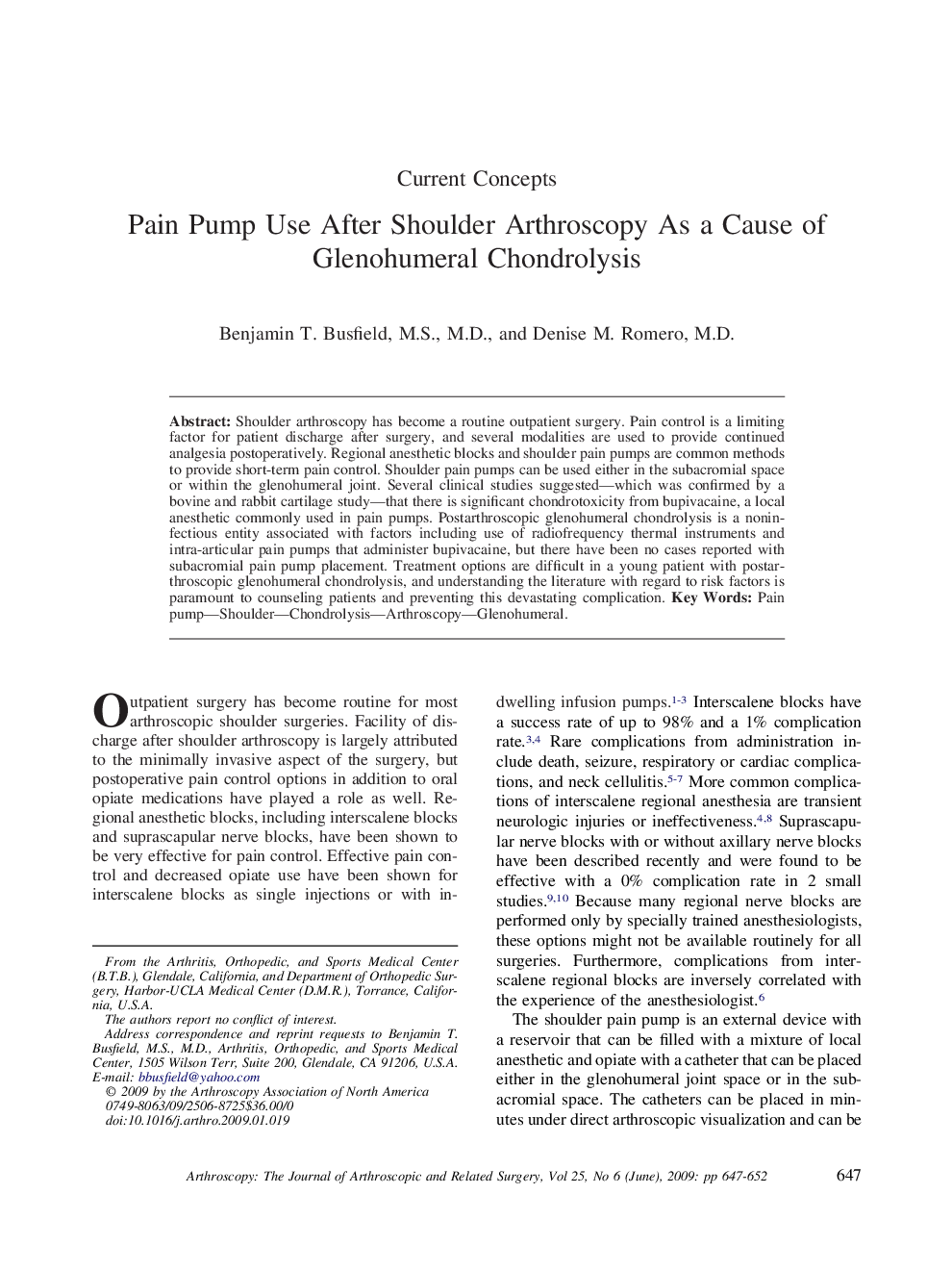| Article ID | Journal | Published Year | Pages | File Type |
|---|---|---|---|---|
| 4044785 | Arthroscopy: The Journal of Arthroscopic & Related Surgery | 2009 | 6 Pages |
Shoulder arthroscopy has become a routine outpatient surgery. Pain control is a limiting factor for patient discharge after surgery, and several modalities are used to provide continued analgesia postoperatively. Regional anesthetic blocks and shoulder pain pumps are common methods to provide short-term pain control. Shoulder pain pumps can be used either in the subacromial space or within the glenohumeral joint. Several clinical studies suggested—which was confirmed by a bovine and rabbit cartilage study—that there is significant chondrotoxicity from bupivacaine, a local anesthetic commonly used in pain pumps. Postarthroscopic glenohumeral chondrolysis is a noninfectious entity associated with factors including use of radiofrequency thermal instruments and intra-articular pain pumps that administer bupivacaine, but there have been no cases reported with subacromial pain pump placement. Treatment options are difficult in a young patient with postarthroscopic glenohumeral chondrolysis, and understanding the literature with regard to risk factors is paramount to counseling patients and preventing this devastating complication.
